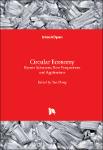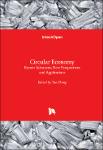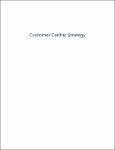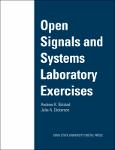Search
Author
- J. Howell, Dorothy (2)
- Jordan, Melissa (2)
- N. Hamilton, Whitney (2)
- Ryozo, Himino (2)
- next >
Subject
- kinh tế (5)
- Development economics (2)
- Development Finance (2)
- Economic History (2)
- next >
Has File(s)
- true (41)
Search Results
Nowadays, the restriction of resources and the environment is very severe. A circular economy is the only way to sustainable development, but how this works still needs more exploration. The series of studies carried out by the author are described in detail in this book. |
Since the mid-1980s, Japan, which was a leading competitor in the world’s manufacturing sector, tried to transform itself to an economy with domestic demand-led mature growth. The ensuing bubbles, busts, and banking crisis, however, left the country chronicle deflation and stagnation. This book analyzes why the Japanese authorities could not avoid making choices that led to this outcome. This report describes policy responses to the boom, bust, crisis, and recovery Japan experienced during the two decades from 1986 to 2004. One hundred and fifty years ago, Japan started to westernize itself after the two centuries of isolation. Since then, it has made two miracles and two major mistakes. |
This open access book provides a readable narrative of the bubbles and the banking crisis Japan experienced during the two decades between the late 1980s and the early 2000s. Japan, which was a leading competitor in the world’s manufacturing sector, tried to transform itself into an economy with domestic demand-led mature growth, but the ensuing bubbles and crisis instead made the country suffer from chronicle deflation and stagnation. The book analyses why the Japanese authorities could not avoid making choices that led to this outcome. The chapters are based on the lectures to regulators from emerging economies delivered at the Global Financial Partnership Center of the Financial Services Agency of Japan. |
Nowadays, the restriction of resources and the environment is very severe. A circular economy is the only way to sustainable development, but how this works still needs more exploration. The series of studies carried out by the author are described in detail in this book. |
Customer centricity is about organizational transformation making the customer the focus for business decisions, processes, product development, services, and procedures. Some companies purport to be customer centric but they fall short in connecting this concept throughout all functional areas of the business. While it is important to offer superb customer service, being customer centric is far more than that. It's about mapping the customer journey to discover customer needs and wants, what's working and what is not, then taking action to improve the customer experience. Customer loyalty is built through providing exceptional customer experiences. This in turn increases revenues through positive company image, referrals, and increased customer lifetime value. Most organizations... |
Open Signals and Systems Laboratory Exercises is a collection of lab assignments that have been used in EE 224: Signals and Systems I in the Department of Electrical and Computer Engineering at Iowa State University. These lab exercises have been curated, edited, and presented in a consistent format to improve student learning. |
This open access book makes quantum computing more accessible than ever before. A fast-growing field at the intersection of physics and computer science, quantum computing promises to have revolutionary capabilities far surpassing “classical” computation. Getting a grip on the science behind the hype can be tough: at its heart lies quantum mechanics, whose enigmatic concepts can be imposing for the novice.
This classroom-tested textbook uses simple language, minimal math, and plenty of examples to explain the three key principles behind quantum computers: superposition, quantum measurement, and entanglement. It then goes on to explain how this quantum world opens up a whole new paradigm of computing.
The book bridges the gap between popular science articles and advanced text... |
Let A be a finite-dimensional algebra over an algebraically closed field. We use a functorial approach involving torsion pairs to construct embeddings of endomorphism algebras of basic projective A–modules P into those of the torsion submodules of P. As an application, we show that blocks of both the classical and quantum Schur algebras S(2,r) and Sq(2,r) in characteristic p > 0 are Morita equivalent as quasi-hereditary algebras to their Ringel duals if they contain 2pk simple modules for some k. |
We consider trees with root at infinity endowed with flow measures, which are nondoubling measures of at least exponential growth and which do not satisfy the isoperimetric inequality. In this setting, we develop a Calderón–Zygmund theory and we define BMO and Hardy spaces, proving a number of desired results extending the corresponding theory as known in more classical settings. |
We are interested in the McKay quiver Γ(G) and skew group rings A ∗G, where G is a finite subgroup of GL(V ), where V is a finite dimensional vector space over a field K, and A is a K −G-algebra. These skew group rings appear in Auslander’s version of the McKay correspondence. In the first part of this paper we consider complex reflection groups G⊆GL(V) and find a combinatorial method, making use of Young diagrams, to construct the McKay quivers for the groups G(r,p,n). We first look at the case G(1,1,n), which is isomorphic to the symmetric group Sn, followed by G(r,1,n) for r > 1. |










